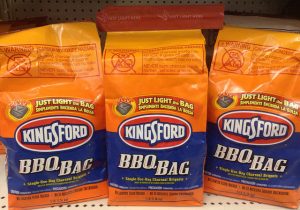8.5 Pricing Strategies – B2C
Once a firm has established its pricing objectives and analyzed the factors that affect how it should price a product, the company must determine the pricing strategy (or strategies) that will help it achieve those objectives. As we have indicated, firms use different pricing strategies for their offerings. And oftentimes, the strategy depends on the stage of life cycle the offerings are in currently. Products may be in different stages of their life cycle in various international markets. Next, we’ll examine three strategies businesses often consider when a product is first introduced and then look at several different pricing approaches that companies utilize during the product life cycle. While these are most common in B2C, they can be utilized in B2B markets as well.
Introductory Pricing Strategies
When introducing a first-to-the-market product, a company has two main pricing options: price skimming of penetration pricing.
A price skimming strategy is when a company sets a high initial price for a product. The idea is to go after consumers who are willing to pay a high price (top of the market) and buy products early. This way, a company recoups its investment in the product faster.
The easy way to remember a skimming approach is to think of the turkey gravy at Thanksgiving. When the gravy is chilled, the fat rises to the top and is often “skimmed” off before serving. Price skimming is a pricing approach designed to skim that top part of the gravy, or the top of the market. Over time, the price of the product goes down as competitors enter the market and more consumers are willing to purchase the offering.
In contrast to a skimming approach, a penetration pricing strategy is one in which a low initial price is set. Often, many competitive products are already in the market. The goal is to get as much of the market as possible to try the product. Penetration pricing is used on many new food products, health and beauty supplies, and paper products sold in grocery stores and mass merchandise stores such as Walmart, Target, and Kmart.
Another approach companies use when they introduce a new product is everyday low prices. That is, the price initially set is the price the seller expects to charge throughout the product’s existence. Companies like Walmart and Lowe’s use everyday low pricing. Lowe’s emphasizes their everyday low pricing strategy with the letters in their name plus the letter “t” (Lowest).

New flavors of snacks, candy, cereal, and shampoo sold in grocery stores and by mass merchandisers similar to the one in this picture are priced using a penetration pricing strategy to get consumers to try the products.
Rex Roof – Cereal Aisle – CC BY 2.0.
Pricing Approaches
Many pricing approaches have a psychological appeal. Odd-even pricing occurs when a company prices a product a few cents or a few dollars below the next dollar amount. For example, instead of being priced $10.00, a product will be priced at $9.99. Likewise, a $20,000 automobile might be priced at $19,998, although the product will cost more once taxes and other fees are added. See Figure 8.5b for an example of odd-even pricing.

The charcoal shown in the photo is priced at $5.99 a bag, which is an example of odd-even pricing, or pricing a product slightly below the next dollar amount.
Mike Mozart – Kingsford, Charcoal – CC BY 2.0.
Prestige pricing occurs when a higher price is utilized to give an offering a high-quality image. Some stores have a quality image, and people perceive that perhaps the products from those stores are of higher quality. Many times, two different stores carry the same product, but one store prices it higher because of the store’s perceived higher image. Neckties are often priced using a strategy known as price lining, or price levels. In other words, there may be only a few price levels ($25, $50, and $75) for the ties, but a large assortment of them at each level. Movies and music often use price lining. You may see a lot of movies, recordings, and ebooks for $15.99, $9.99, and perhaps $4.99, but you won’t see a lot of different price levels.
Leader pricing involves pricing one or more items low to get people into a store. The products with low prices are often on the front page of store ads and “lead” the promotion. For example, prior to Thanksgiving, grocery stores advertise turkeys and cranberry sauce at very low prices. The goal is to get shoppers to buy many more items in addition to the low-priced items. Leader or low prices are legal; however, as you learned earlier, loss leaders, or items priced below cost in an effort put competitors out of business, are illegal in many states. If the intent of pricing the product below cost is to drive store traffic, it is usually legal.
Price bundling occurs when different offerings are sold together at a price that’s typically lower than the total price a customer would pay by buying each offering separately. Combo meals and value meals sold at restaurants are an example. Companies such as McDonald’s have promoted value meals for a long time in many different markets. Other products such as shampoo and conditioner are sometimes bundled together. Automobile companies bundle product options. The idea behind bundling is to increase an organization’s revenues.
Captive pricing is a strategy firms use when consumers must buy a given product because they are at a certain event or location or they need a particular product because no substitutes will work. Concessions at a sporting event or a movie provide examples of how captive pricing is used. Maybe you didn’t pay much to attend the game, but the snacks and drinks were extremely expensive. Similarly, if you buy a razor and must purchase specific razor blades for it, you have experienced captive pricing. The blades are often more expensive than the razor because customers do not have the option of choosing blades from another manufacturer.
You Try It!

